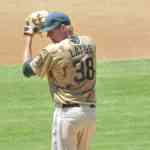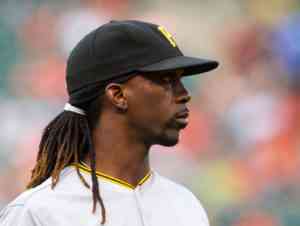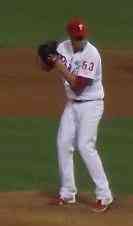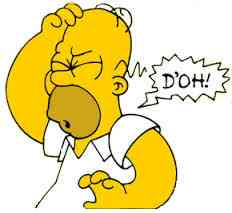Dear Rotoman:
I’m in a 17 team deep league with unconventional custom categories. I don’t have time to do my own custom predictions and valuations — so i’ve been using Baseball Monster to give me a sense of value. Do you know of any other sites that you would recommend higher? Thanks so much!!
“Unconventional and Custom”
Dear UaC,
It seems that Baseball Monster hasn’t been updated since the end of last season, so I can’t test their custom pricing tool. But I wanted to take on your question because it raises some good questions about customized categories and shallow versus deep leagues.
For one, you score every category the same. At least to start.
If you were making a price for Hit By Pitch, you would rank the hitters from first to last in that category. You would subtract the number of times the last drafted guy is expected to be hit from all the draftable players, which gives you the marginally valuable HBP. You can then divide the number of Marginal HBP by the total Marginal HBP and then multiply that times the amount of money allocated to that category (if your league had four categories, that would be one quarter—25 percent—of the money). Easy.
When you do this after the season you get the true value a player contributed in that category for the year.
But when you do this based on projections for the coming year you run into a few problems.
For instance, not every category is equally reliant on a player’s skill. Strikeouts and walks for pitchers are pretty reliable, at least until the pitcher gets hurt or his skills change, but wins, for instance, are not so reliable.
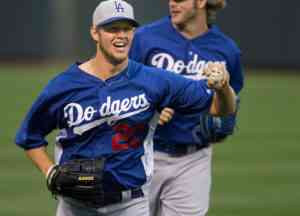 Clayton Kershaw, the game’s best pitcher, has won 13, 21, 14, 16, and 21 games in the past five years, making all his starts each year except last year. His marginal value would have been 6, 14, 7, 9, and 14, which varies wildly at or above the median marginal value (six each of those years) of a fantasy pitcher taken in the auction. In the three years he didn’t win 21 games, his value above an average starter in wins would have been 0, 1 and 3 wins. No great shakes at all.
Clayton Kershaw, the game’s best pitcher, has won 13, 21, 14, 16, and 21 games in the past five years, making all his starts each year except last year. His marginal value would have been 6, 14, 7, 9, and 14, which varies wildly at or above the median marginal value (six each of those years) of a fantasy pitcher taken in the auction. In the three years he didn’t win 21 games, his value above an average starter in wins would have been 0, 1 and 3 wins. No great shakes at all.
So, how do you value those wins? Same pitcher, wildly divergent results. I dare say you don’t value them as reliably as you value his strikeouts. Yet in the standings, each category generates the same amount of value. But in Wins those values are compressed around the middle.
Another way categories vary in value is strategic. In the classic roto game, stolen base and saves guys generally cost less than you would expect based on the value they generate in those categories. While some part of that may be risk management, not putting all one’s eggs in one basket, another reason to devalue a category is because it’s possible to gain points in it without spending any money on it.
The ability to avoid paying for steals and saves in the auction encourages some teams to dump out of the category, spending money that might be budgeted for steals or saves on HR, RBI and Ks. Once a few teams do this, the demand for the top guys in these cats is lowered, and prices fall a bit. The category is still worth the same as other cats, but strategic investment creates and opportunity to reallocate resources more efficiently. You hope.
These are just two ways to evaluate your custom categories, and adjust your thinking about how money will be allocated for different players in your league.
Another factor is the deepness of your league. You call a 17 team league deep, but at that level the available replacement player is a starter. Maybe not a very good one, but good enough to fill in and produce when you have an injury. This bountiful replacement pool means that there is no reason to pay $2 or $5 or even $8 for a player. You can do just fine with the proverbial $1 player at a position or three. And what should you do with the extra money you save?
Buy scarce talent at positions where the talent isn’t that deep. Meaning, buy the best catcher, the best shortstop, the best third baseman, oh, and a reliable closer. Buy steals. Your goal is to get the players who do things that other players at their position don’t, and don’t worry about overpaying for them.
Get the best, then fill in as best you can.
Because, while the Baseball Monster pricer (and really all pricing software) might be able to tell you how much a player was worth in the past, it stumbles dealing with the non-linear values of the top players in a league that has a lot of available replacement talent.
The bottom line here is that you can call a league deep or shallow, but there is an actual definition that describes the difference. In a deep league almost all the available players are active on teams. There is virtually no replacement pool.
A league that has a replacement pool of some robustness is a shallow league. Maybe not as shallow as others, but it is a league that has the qualities of the non-linear pricing described above.
I’m sure there’s a formula out there to help translate the values of true deep leagues to far less deep leagues like yours, one that stretches the curve appropriately, but the best way for a fantasy player to make the adjustment is to sit down with the price list and to personally reallocate the excess values of the replacement level players to the best players. Adjust them also to better reflect your assessment of talent and the vagaries of your league, too. It is these things that matter more than hard and fast dollar values in a shallow-er league (much as any competently constructed pricer, like the one behind the pay wall at Rotowire, or the one in the Patton $ software we will be selling very soon, can give you).
Is there a free player pricer that works? There may well be, but the ones I used to use are gone. If you find one you would like me to evaluate, let me know. I’m happy to check it out and pass along what I find.
Linearly,
Rotoman
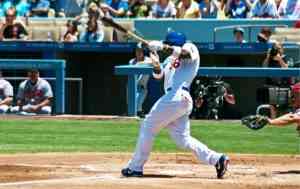 Puig is ranked 24th in the consensus ADP, while Machado is 138th, Soler is 111th, and Bogaerts is 182nd.
Puig is ranked 24th in the consensus ADP, while Machado is 138th, Soler is 111th, and Bogaerts is 182nd.

